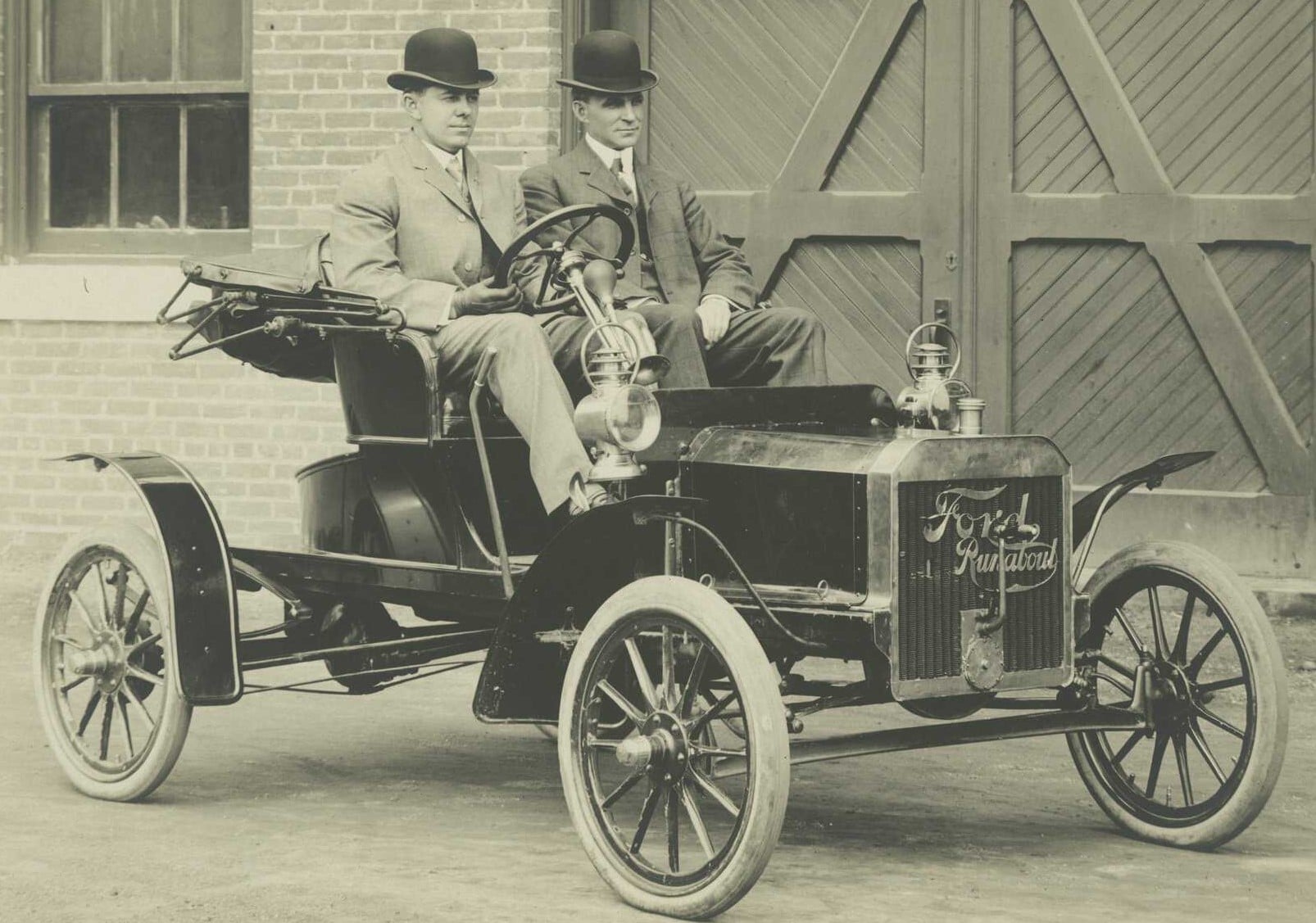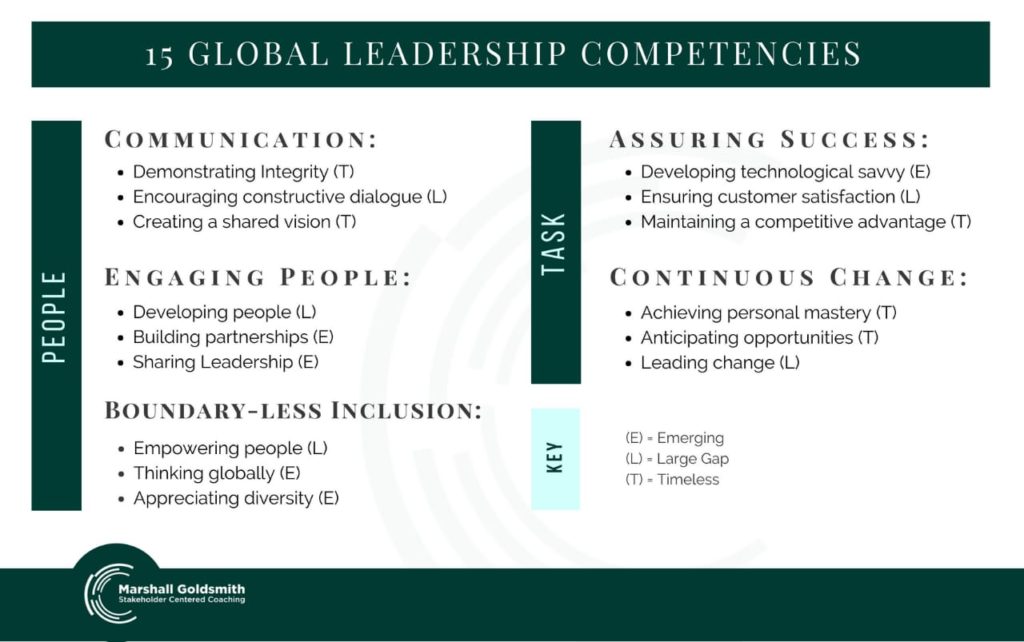Lessons for leaders: Henry Ford FAILURE story & bad leadership
Many of us have heard about the legendary leader Henry Ford assembly line and the Model T car’s success story. The success story has a lot of lessons for leaders. What to do to be a successful leader – persistence, hard work, and thinking outside the box.
But there is also a relatively unknown and darker story of Henry Ford’s bad leadership and equally spectacular failure! And therein lie critical lessons for leaders. These lessons for leaders are about what not to do as a leader.
Leadership success often leads to ignoring feedback and some poor leadership behaviors, ultimately leading to failure. A good 360-degree feedback tool combined with leadership coaching is the most effective way to ensure that leaders become aware of his/her bottlenecks, take ownership of their behaviors and their impact, and work to improve their behavior.
The Model T, the Henry Ford assembly line success story, and lessons for leaders
Until the 20th century, the first automobiles were hand made, clunky, and expensive. Only the rich could afford to own one. October 1, 1908, was a noteworthy date in the automobile industry’s history. When the first Model T, the car, rolled off the assembly line and revolutionized transportation forever. The assembly line became synonymous with Henry Ford and his ingenuity. The Model T was the first affordable car for the mass market, and it kept selling and selling. It took seven years for Ford to sell its millionth Model T. Just a year and a half later, it sold its two-millionth. By 1920, four million model T’s were sold!
Over the next quarter of a century, it made Ford Motor the most successful automobile company globally. It also made Henry Ford America’s second billionaire after John D. Rockefeller.
That is the success story of the legendary Henry Ford, his innovation vision, and his leadership. Many of us have heard about this success story of Henry Ford, the assembly line, and the Model T., The lessons for leaders from Henry Ford’s success story, are persistence, tenacity, and hard work.

Image courtesy – Henry Ford museum
The flip side of success and the lessons for leaders
But there is also a relatively unknown and darker story of Henry Ford’s bad leadership and equally spectacular failure that took the company to the brink of bankruptcy! There are lessons for leaders in his failure story as well. These lessons for leaders lessons in poor leadership and are not what NOT to do as a leader!
During the 1920s, subtle but sure trends emerged that were dangerous to the Model T’s dominance. However, Henry Ford was in denial. Henry Ford stuck to the assembly line and mass production concept. Ford famously declared, “History is more or less bunk.” But history was about to happen to him.
Following the depression of the 1920s, the wealth of Americans grew at a rapid rate. By 1920, more than half the population lived in cities instead of living near a farm or in a rural community for the first time. Working-class Americans enjoyed more leisure than ever before, and some companies implemented the two-week vacation policy. Hollywood was turning out motion pictures that engrossed audiences. Sporting events also captured the nation’s imagination, especially Babe Ruth’s sixty home runs in 1927. Popular culture, style, and fashion were coming to the United States.
The winds of change in the automobile industry – a lesson for leaders to stay ahead of change
This cultural and social transformation also affected the automobile industry. Automobiles, originally just a means of transportation, became a status symbol for the upwardly mobile Americans. Most of what we own is not on display. No one knows your salary or your financial assets, and we consider it impolite in our culture to ask. Only people invited to your home know what it looks like and can guess what it cost to furnish it. Your automobile, by contrast, is on display wherever you drive. It is visible, mobile, and communicates your status everywhere you drive it!
A leader in denial who refuses to change – a classic example of poor leadership behaviors and the lesson for leaders
Henry Ford refused to believe that an automobile was anything more than an appliance. His favorite slogan about the Model T was “It takes you there, and it brings you back.” The factory that was producing the Model T was the same as it had been for years. The way he was producing it—the moving assembly line, interchangeable parts, extreme specialization of labor—was by 1925 the same as it had been for years. His pricing strategy also remained the same. Model T came in only a single color – Black. Henry Ford wrote in 1922 that “any customer can have a car painted any color that he wants – as long as it is black.”
The desires and expectations of consumers were changing in the 1920s. Ford’s sales in 1925 were flat compared to 1924, although the car market grew rapidly. Ford’s market share declined from 54 to 45 percent, a sign of danger. Ford chose to ignore it. But the legendary leader Henry Ford was in denial of the reality. He was ignoring feedback and avoiding facing reality. It often happens with many successful leaders; Ford cushioned himself from reality by surrounding himself with “yes men” who told him only what he wanted to hear and not what he needed to hear!
Read: Poor Leadership Behaviors & its Collateral Damage
General Motors beat Ford by listening to feedback and being responsive – an important lesson for leaders.
General Motors, on the other hand, had the answer to the needs of the changing market. Instead of following the Henry Ford assembly line concept and producing the same model in a single color, they customized. Not only did GM differentiate its cars through colors but also through a policy designed to exploit the automobile as a status symbol. The cars in GM’s line were Chevrolet, Pontiac, Oldsmobile, Buick, and Cadillac. Fortune magazine in the 1930s characterized the options of GM models as: “Chevrolet for the hoi polloi, … Pontiac . . . for the poor but proud, Oldsmobile for the comfortable but discreet, Buick for the striving, Cadillac for the rich.”
Unlike Ford, GM also introduced an annual model change for all its cars. With the annual model change, driving last year’s model became a comment on your status in the world. General Motors adapted to the feedback and the changing tastes of the consumers. It poised GM to thrive for the next few decades!

Delivering the bad news to a leader who won’t listen
The sales department told Henry Ford that Model T sales were slipping. Unless they substantially changed the car, it would soon stop selling. The Henry Ford assembly line that brought them success was now an Achilles heel. Ford said the car was fine—the problem was an incompetent sales department. This is a typical poor leadership behavior of ignoring feedback and blaming others.
Imagine that you are a Ford executive. The truth is obvious for all to see. How do you clearly communicate to the boss, a genius, and a successful leader, that change is needed?

Poor leadership behavior – Punishing the messenger.
The man who finally decided to “bell the cat” was Ernest Kanzler. He was a senior executive at Ford and also the brother-in-law of Ford’s only child, Edsel. He wrote a seven-page memorandum and delivered it to Ford on January 26, 1926. Kanzler spoke the unpleasant truth. His reward was the same as for many people who do so. He was fired. The fantasy that you can render the message untrue if you get rid of the messenger is a powerful one.
Punishing the messenger is one of the often fatal poor leadership behaviors of successful leaders. By the mid-1920s, Ford was living in a world of his own. There was irrefutable evidence that his strategy was failing. Ford nevertheless told The New York Times late in 1926, “The Ford car will continue to be made in the same way. . . . I am not governed by anybody’s figures but by my own information and observation.” Ford was suffering from classic “ego traps” that successful leaders often fall prey to.
Read The leadership ego traps that derail a leader’s career
The Achilles heel of successful leaders – Denial of reality
“What will Ford do next?”—the answer came as quite a shock to almost everyone. Ford decided to shut down the Model T plant at River Rouge completely. The plant remained shut down for nearly a year to retool it to make a new Model A. This left General Motor’s Chevrolet with no competition for an entire year! Sensing the opportunity, Mr. Chrysler also entered the automobile market with his Plymouth model. Ford remained steadfast in his denial of what the automobile market had become. After killing off the Model T, he created the Model A. Although Model A was a technically improved product, there would be no “car for every purse and purpose” and no annual model change.
No one could have predicted the catastrophic fall of Henry Ford and the Ford Motor Company.
This marked the end of the market leadership of the Ford Motor Company. Occasionally over the next decade, it would beat GM in sales. However, except for three years (1929, 1930, and 1935), Ford trailed GM in the automobile’s market share by a wide margin for eight decades to come! Henry Ford never changed. Successful leaders often become superstitious – they hold on to doing the same things that originally made them successful. Not changing is a recipe for disaster. In 1945, by the end of World War II, his company was at the edge of bankruptcy. Henry Ford II, Henry Ford’s grandson, eventually saved Ford when he took the company over later.
Bad habits of good leaders (Poor leadership behaviors) – lessons for leaders
Henry Ford exhibited many of the 20 bad habits that hold back further success – that Dr. Marshall Goldsmith lists in his bestselling book – What Got You Here Won’t Get You There”.
- Not listening: Successful leaders often disregard others’ ideas and are unwilling to listen to others. It is not only disrespectful to the team members but also harmful as it was with Henry Ford.
- Telling the world how smart we are: Successful leaders suffer from this tendency to show off. The need to show people we’re smarter than they think we are. It is unnecessary and annoying to others.
- Making destructive comments: The needless sarcasm and cutting remarks that we think make us witty. Ford was known for such sarcastic comments and practical jokes that may be funny to him but insulted others.
- Making excuses: The need to reposition our annoying behavior as a permanent fixture, so people excuse us for it.
- Clinging to the past: The need to deflect blame away from ourselves and onto events and people from our past, a subset of blaming everyone else.
- Punishing the messenger: The misguided need to attack the innocent who are usually only trying to help us. Henry Ford did it to Ernest Kanzler, who was just a messenger of the bad news.
It is not just the arrogant leaders who fall prey to these bad leadership habits. The most humble leaders often fall prey to many of these bad habits when they constantly get positive reinforcement. When a leader hardly ever gets real, truthful, and unfiltered feedback that may help them stay grounded, it is easy to fall prey to one or more of these bad habits.
How can leaders stay grounded and avoid the bad habits that derail their careers?
A good 360-degree feedback tool combined with leadership coaching is the most effective way to ensure that leaders become aware of his/her bottlenecks, take ownership of their behaviors and their impact, and work to improve their behavior.
One of the most effective tools for leaders to stay grounded is to get regular and anonymous 360-degree feedback from all the team members with whom the leader interacts regularly. This allows the leader to see himself as others see him. Any difference in perception between how the leader sees himself and how others see the leader is an area where the leader may be blindsided and addressed through leadership coaching. The 360-degree feedback should be administered to ALL leaders at least once a year. It is one of the best tools to identify strengths and improvement areas for leadership development.
Global Leadership Assessment (GLA360) for your leadership team
The Global Leadership Assessment (GLA360) is a 360-degree feedback tool based on extensive research and designed and tested by Dr. Marshall Goldsmith. He has been awarded and recognized worldwide and is considered the #1 Leadership Thinker and the Executive Coach to Fortune 500 CEOs. The research included the CEOs of Fortune 100 companies, global thought leaders and their inputs, and international business executives of multinationals on six continents.
A statistician creates most assessments. In contrast, the GLA 360 is created based on inputs by the leaders and for the leaders. A real-life leader, in all likeliness, will know a lot more about leadership than an academician or a statistician. You are assessed on competencies that have made real leaders in multinationals successful. You are compared with actual leaders, which gives a more accurate assessment helpful in the real world.
The GLA 360 measures the following 15 competencies that matter to real leaders on 6 continents. It shows leaders the areas they need to develop to succeed in a competitive business environment.

Helping successful leaders become more successful – lessons for leaders
Making leaders aware of their strengths and improvement areas through 360-degree feedback is only the first step. The next step is to help the leader leverage their strengths and improve weaknesses through leadership coaching. Why is coaching important in leadership development? How is it beneficial? Leadership coaching is the most effective way to ensure that leadership improvement takes place. That leader takes ownership and responsibility for her behavior and results. Executive education and training programs help in creating awareness for change – however, behavior change requires customized solutions and consistent follow-up and accountability, which executive coaching provides by its design.
World’s number 1 Executive Coaching program designed by World’ number 1 leadership thinker
Read: Everything you ever wanted to know about executive coaching
We offer our New Age Leadership – NAL Triple Advantage Leadership Coaching.
That delivers guaranteed and measurable leadership growth. It is based on a stakeholder-centered coaching process with a 95% effectiveness rate (in a study or 11000 leaders on 4 continents). It is used by companies ranging from startups to 150 of the Fortune 500 companies to develop their leaders.
Here are some of the salient benefits of NAL Triple Advantage Leadership Coaching
Time and resource-efficient: The leader does not have to leave work to attend training programs. We go to the leader and her team. And it only takes 1.5 hours per month. The rest of the time, the leader is working to implement with her team.
Separate and customized improvement areas for each leader: Every leader is different. One size fits all approach doesn’t work. Individual development areas for each leader aligned to the business strategy.
Involves entire team: Unlike most leadership programs, NAL Triple Advantage Leadership Coaching involves the leader’s entire team, and it has a cascading effect – increasing the team effectiveness and improving organizational culture.
The leader becomes the coach: for continuous improvement for leaders themselves and their teams. It is like kaizen for your leadership development.
Cost-Effective: Our entire one-year coaching engagement often costs less than sending the leader to a short duration leadership program at any reputed B school.
Guaranteed and measurable leadership growth: as assessed – not by us – but anonymously rated by the leader’s own team members.
Pay us only after we deliver results! : We work with many of our clients on a pay for results basis. What does it mean? If the leaders don’t improve, you don’t have to pay us.
Schedule an exploratory 15-minute conversation with our leadership adviser today
Click the button below.
References
Book – Denial: Why Business Leaders Fail to Look Facts in the Face and What to do about it – by Richard S. Tedlow
Book – What Got You Here Won’t Get You There – by Marshall Goldsmith



0 Comments